10 Tips to Reduce Noise from Your Air Compressor and Improve Quietness

Are you tired of the constant noise from your air compressor? Does it make it difficult to concentrate or have a conversation in your workspace? Fortunately, there are several steps you can take to reduce the noise and improve the overall quietness of your air compressor.
1. Choose the right location
Where you place your air compressor can have a significant impact on its noise level. Try to position it away from areas where you spend the most time, such as your office or living room. Additionally, consider placing it on a sound-absorbing mat or shelf to further dampen the noise.
2. Insulate the compressor
Applying sound insulation material to the walls of your air compressor can help absorb and reduce noise. This can be done using foam or acoustic panels designed specifically for noise reduction. Make sure to cover all sides of the compressor, including the top and bottom.
3. Regular maintenance
A well-maintained air compressor is generally quieter than one that has been neglected. Regularly check and replace any worn-out parts, such as belts or filters. Additionally, make sure to clean the compressor regularly to prevent the accumulation of dirt and debris, which can contribute to noise.
4. Use a muffler
Consider installing a muffler or silencer on the exhaust port of your air compressor. These devices are designed to reduce the noise produced by the escaping air. They can be easily attached and are available in various sizes to fit different types of compressors.
5. Upgrade to a quieter model
If your current air compressor is particularly loud and all other measures fail to provide sufficient noise reduction, it may be worth considering upgrading to a newer, quieter model. Look for compressors that are specifically designed for low-noise operation.
6. Check for loose or vibrating parts
Noise can often be caused by loose or vibrating parts within the air compressor. Take the time to inspect and tighten any loose screws, bolts, or fittings. Use rubber pads or gaskets to dampen vibrations and prevent them from being transmitted to other parts of the compressor.
7. Soundproof the surrounding area
In addition to reducing the noise directly produced by the air compressor, you can also soundproof the surrounding area to further improve quietness. This can be done by installing sound-absorbing materials on the walls, floors, and ceilings of the workspace.
8. Limit running time
If noise is a major concern, consider limiting the running time of your air compressor. Only use it when necessary and try to schedule your tasks in a way that minimizes its operation during periods when you need a quieter environment.
9. Use noise-cancelling headphones
If you cannot reduce the noise from your air compressor to an acceptable level, consider wearing noise-cancelling headphones. These headphones use technology to actively cancel out external sounds and can significantly improve your ability to work in a noisy environment.
10. Invest in a sound enclosure
If all else fails, consider investing in a sound enclosure or cabinet designed specifically for air compressors. These enclosures effectively trap and minimize noise, providing a quieter working environment. Make sure to choose a properly sized enclosure to fit your air compressor.
By implementing these tips, you can significantly reduce the noise from your air compressor and create a quieter and more pleasant workspace. Remember, a quieter environment can improve productivity, concentration, and overall well-being.
Importance of Reducing Noise from Your Air Compressor
Reducing noise from your air compressor is an important consideration for several reasons. First and foremost, excessive noise can be detrimental to your health and well-being. Prolonged exposure to loud noises can cause hearing damage and lead to other health issues such as stress, fatigue, and difficulty concentrating. By reducing the noise level of your air compressor, you can create a safer and more comfortable working environment.
Another reason to reduce noise from your air compressor is to comply with noise regulations and standards. Many workplaces have specific noise level limits that need to be adhered to in order to protect the health and well-being of employees. By reducing the noise level of your air compressor, you can ensure that you are in compliance with these regulations and avoid potential fines or penalties.
Reducing noise from your air compressor can also have a positive impact on productivity and efficiency. Excessive noise can be distracting and make it difficult for workers to concentrate on their tasks. By reducing noise levels, you can create a quieter and more focused work environment, which can lead to increased productivity and improved job performance.
Furthermore, reducing noise from your air compressor can also help to minimize the impact on neighboring areas and improve community relations. Excessive noise can be a major source of annoyance for nearby residents, especially if they are continuously subjected to loud noises. By reducing the noise level of your air compressor, you can be a good neighbor and contribute to the overall harmony of the community.
In conclusion, reducing noise from your air compressor is important for the health and well-being of yourself and your employees, as well as for complying with regulations, improving productivity, and maintaining good community relations. Taking steps to reduce noise levels should be a priority for any air compressor owner or operator.
Understanding Noise Reduction Levels
Noise reduction levels refer to the amount of noise that can be reduced from an air compressor. It is measured in decibels (dB) and is an important factor to consider when looking for a quiet air compressor.
The decibel scale:
The decibel scale is logarithmic, which means that a small change in decibel levels can represent a significant difference in noise intensity. For example, a 10 dB reduction in noise level can be perceived as a 50% reduction in noise volume.
Factors affecting noise reduction levels:
- Design and construction: The design and construction of the air compressor can greatly impact the noise reduction levels. Certain features, such as sound insulation materials and vibration dampeners, can contribute to a quieter operation.
- Motor type: The type of motor used in the air compressor can also affect the noise reduction levels. Some motors are designed to be quieter and more efficient than others.
- Exhaust system: The exhaust system of the air compressor plays a role in noise reduction. A well-designed exhaust system can help minimize noise levels.
Choosing the right noise reduction level:
When choosing an air compressor, it is important to consider the noise reduction level that is suitable for your needs. Factors to consider include the environment in which the air compressor will be used, the proximity of the air compressor to living or working spaces, and any noise regulations that may apply.
Comparing noise reduction levels:
Manufacturers typically provide information about the noise reduction levels of their air compressors. This information can be used to compare different models and choose the one that meets your noise reduction requirements.
Conclusion:
Understanding noise reduction levels is crucial when looking for a quiet air compressor. By considering factors such as design, motor type, and exhaust system, you can choose an air compressor that meets your noise reduction needs and provides a quieter operation.
Choosing Silencing Options for Your Air Compressor
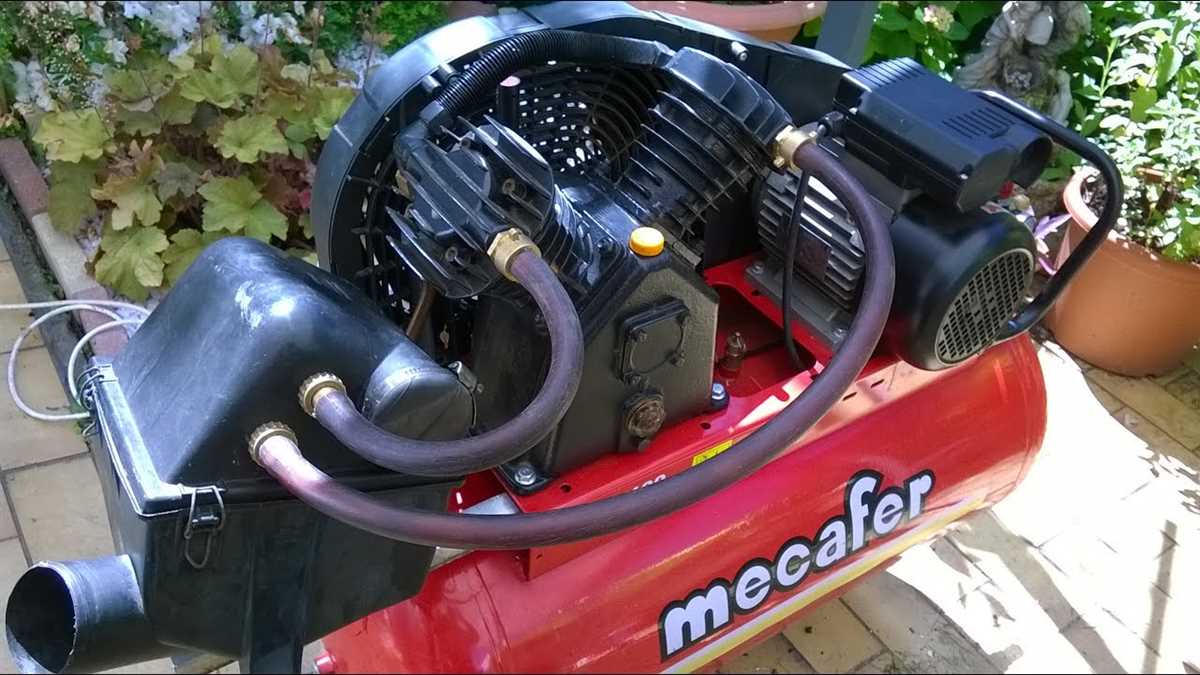
When it comes to reducing noise from your air compressor, there are several silencing options available. The right choice for you will depend on various factors such as the level of noise you want to reduce, the size and type of your air compressor, and your budget.
1. Acoustic Enclosure: An acoustic enclosure is a popular option for reducing noise. It is a box-like structure made of sound-absorbing materials that encloses the air compressor. This helps to contain the noise and prevent it from spreading to the surrounding area.
2. Silencers: Silencers or mufflers can be attached to the air intake and exhaust of the compressor to reduce noise. They work by redirecting the air flow and reducing the intensity of the sound waves. Silencers are typically made of materials that absorb sound, such as fiberglass or foam.
3. Vibration Isolators: Vibration isolators are used to reduce noise caused by the vibrations of the compressor. They are typically made of rubber or other resilient materials that absorb vibrations. By isolating the compressor from its surroundings, these isolators help to reduce the transmission of noise.
4. Anti-Vibration Pads: Anti-vibration pads can be placed under the air compressor to further reduce vibrations and noise. These pads are made of materials that dampen vibrations, such as rubber or cork. They help to absorb the vibrations before they can be transmitted to the surrounding areas.
5. Noise Reduction Blankets: Noise reduction blankets can be draped over the air compressor to absorb sound waves and reduce noise. These blankets are made of materials that are designed to absorb and block sound, such as mineral wool or mass-loaded vinyl.
6. Exhaust Silencers: If the noise from the air compressor exhaust is the main concern, exhaust silencers can be installed to reduce noise levels. These silencers are specifically designed to attenuate the sound produced by the exhaust gases.
7. Soundproof Enclosure: For maximum noise reduction, a soundproof enclosure can be used. These enclosures not only enclose the air compressor but also include additional soundproofing materials to absorb and block sound. They are typically made of multiple layers of sound-absorbing materials and may have specialized acoustic dampening features.
8. Combination of Options: In many cases, a combination of different silencing options may be used to achieve the desired noise reduction level. By combining different techniques such as an acoustic enclosure, silencers, and vibration isolators, you can effectively reduce noise from your air compressor.
Before choosing a silencing option, it is important to assess your specific needs and requirements. Consider factors such as the noise level regulations in your area, the space available for installation, and the cost of the silencing options. Consulting with a professional or a specialist in air compressor noise reduction can also help you make the right choice for your specific situation.
Improving Air Compressor Soundproofing
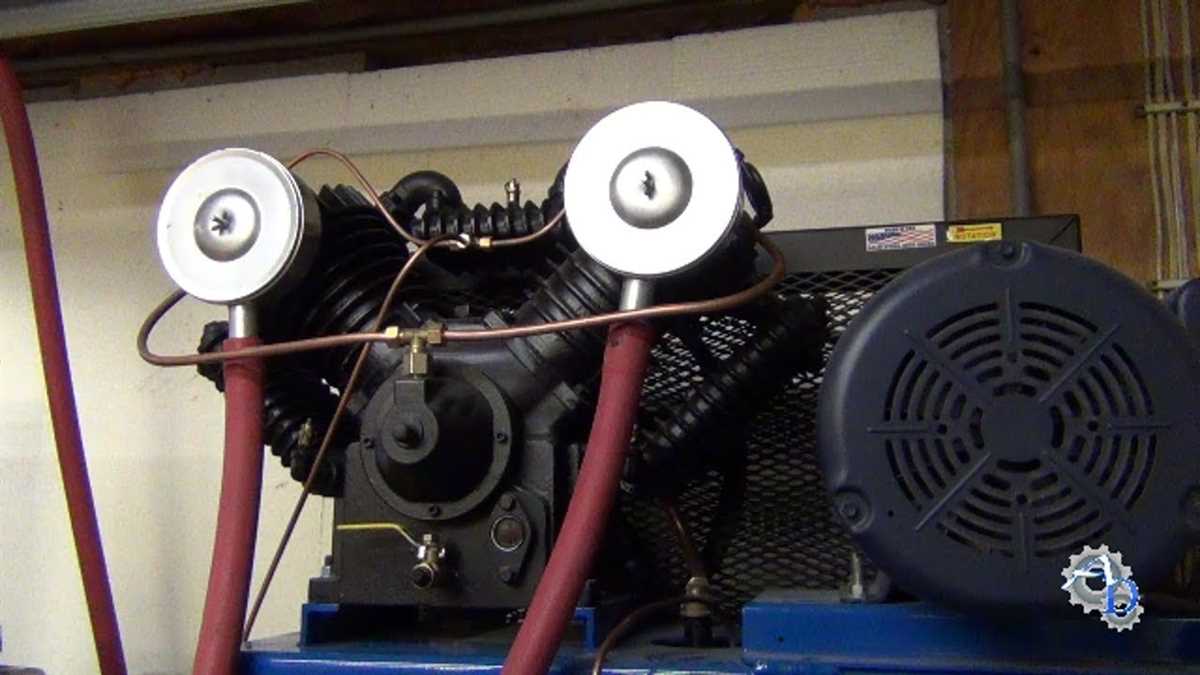
Reducing noise from an air compressor can greatly improve the overall quietness of a workspace. There are several steps you can take to soundproof your air compressor and minimize noise pollution.
1. Insulate the compressor housing
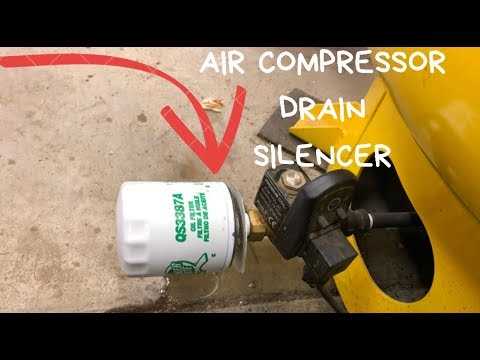
One of the most effective ways to reduce noise from an air compressor is to insulate the housing. Use soundproofing materials such as foam or rubber to line the inside of the housing and reduce vibrations. This can help absorb noise and prevent it from escaping the compressor.
2. Install a silencer
A silencer can be installed on the air intake or exhaust to reduce noise levels. This device works by reducing the pressure of the air, which in turn reduces the noise produced. Make sure to choose a silencer that is compatible with your specific air compressor model.
3. Use anti-vibration pads
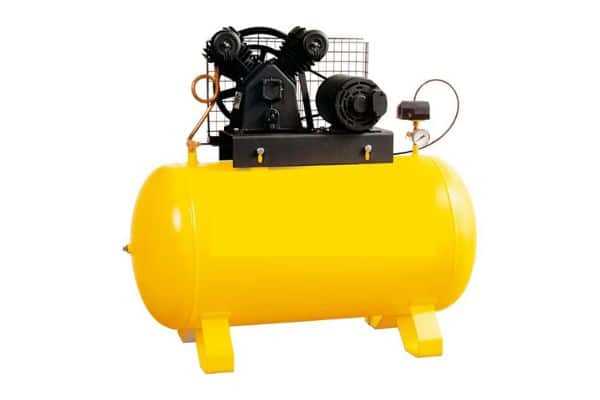
Placing anti-vibration pads under your air compressor can help absorb vibrations and reduce noise. These pads are made of rubber or neoprene and can effectively minimize noise transmission through the floor or surface on which the compressor is placed. Ensure that the pads are the correct size and thickness for your compressor.
4. Regular maintenance
Performing regular maintenance on your air compressor can help reduce noise levels. Check for loose parts, worn-out components, or damaged insulation. Replace any faulty parts and tighten any loose connections to ensure that the compressor is operating as quietly as possible.
5. Optimize compressor placement
The location of your air compressor can affect noise levels. Consider placing it in a separate room or enclosure, away from areas where noise-sensitive activities occur. Additionally, ensure that the compressor is placed on a solid, stable surface to minimize vibrations and noise transmission.
6. Use noise-reducing accessories
There are various accessories available that can help reduce noise from an air compressor. Consider using noise-reducing hoses, fittings, and connectors to minimize noise while the compressor is in operation. These accessories are specifically designed to dampen noise and can greatly improve the overall quietness of your workspace.
7. Consider a soundproofing enclosure
If noise reduction is a top priority, you may want to invest in a soundproofing enclosure specifically designed for air compressors. These enclosures are constructed with sound-absorbing materials and can significantly reduce noise levels. Choose an enclosure that is compatible with your compressor’s size and ventilation requirements.
By implementing these tips, you can greatly improve the soundproofing of your air compressor and create a quieter and more comfortable workspace.
Using Vibration Isolation Pads for Noise Reduction
One effective way to reduce the noise produced by your air compressor is by using vibration isolation pads. These pads are designed to absorb and dampen vibrations, which can help minimize the overall noise level. By placing the air compressor on top of these pads, you can significantly reduce the transmission of vibrations to nearby structures and surfaces.
How do vibration isolation pads work?
Vibration isolation pads are made from a variety of materials, including rubber and neoprene. They work by creating a barrier between the air compressor and the surface it is placed on. When the compressor vibrates, the pads absorb and dissipate the vibrations, preventing them from transferring to the surrounding areas. This can help reduce noise and prevent any potential damage to the compressor or the surfaces it is in contact with.
Tips for using vibration isolation pads:
- Choose the right size and thickness: Ensure that the vibration isolation pads you select are the appropriate size and thickness for your air compressor. This will ensure optimal noise reduction and vibration absorption.
- Proper placement: Position the air compressor on top of the vibration isolation pads, making sure it is centered and stable. This will help maximize the effectiveness of the pads in reducing noise.
- Regular maintenance: Inspect the vibration isolation pads regularly to ensure they are in good condition. Replace any worn-out or damaged pads to maintain optimal noise reduction.
Benefits of using vibration isolation pads:
Using vibration isolation pads for your air compressor offers several benefits. Firstly, it helps reduce noise, creating a quieter work environment. Additionally, vibration isolation pads can help prolong the lifespan of your air compressor by minimizing the stress caused by vibrations. Furthermore, these pads can prevent the transfer of vibrations to other structures or equipment, reducing the risk of damage or disruption.
In conclusion, utilizing vibration isolation pads is an effective method for reducing noise from your air compressor. By selecting the right pads, ensuring proper placement, and conducting regular maintenance, you can enjoy a quieter and more efficient air compressor.
Regular Maintenance for Quieter Air Compressor Operation
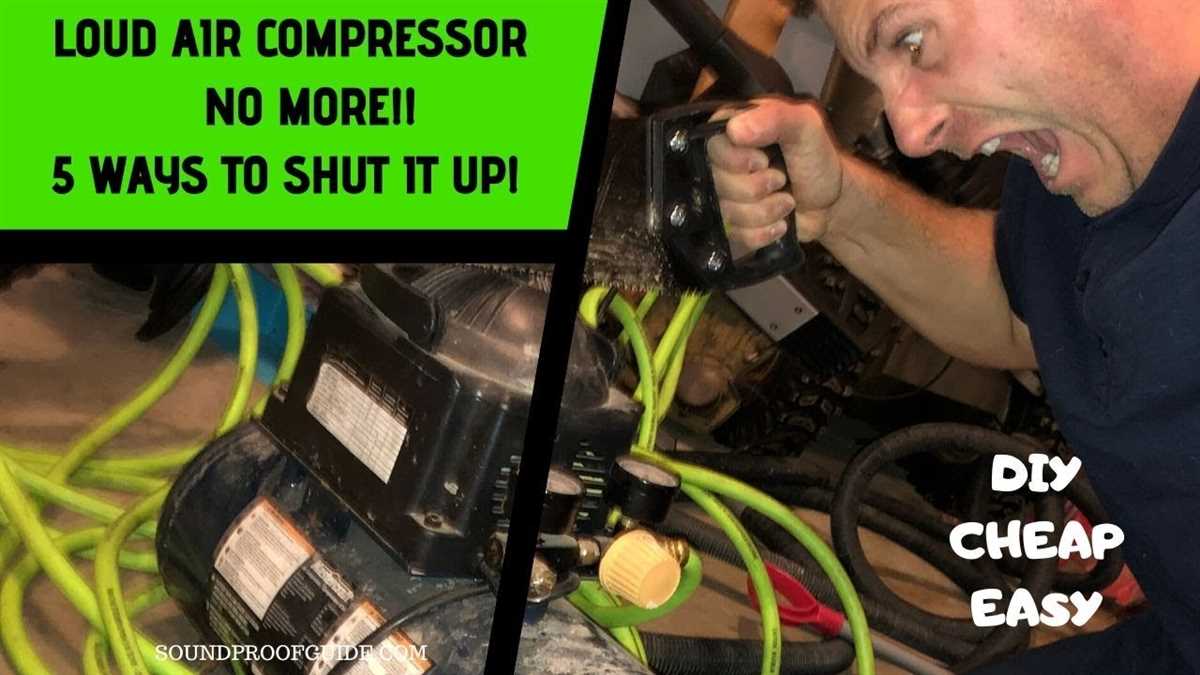
Regular maintenance is essential for ensuring that your air compressor operates quietly. By following a few simple maintenance tasks, you can help reduce noise levels and improve the overall performance of your compressor.
1. Lubricate Moving Parts:
Proper lubrication of the moving parts of your air compressor can significantly reduce noise. Regularly check and lubricate components such as pistons, cylinders, and bearings with the appropriate lubricant recommended by the manufacturer.
2. Check for Air Leaks:
Air leaks can contribute to increased noise levels from your air compressor. Inspect the air lines, fittings, and connections regularly to ensure there are no leaks. Repair or replace any damaged or worn-out parts to prevent air leaks and reduce noise.
3. Clean or Replace Air Filters:
Dusty or clogged air filters can restrict airflow and cause the air compressor to work harder, resulting in increased noise. Clean or replace the air filters regularly to maintain proper airflow and reduce noise levels.
4. Inspect and Tighten Loose Fasteners:
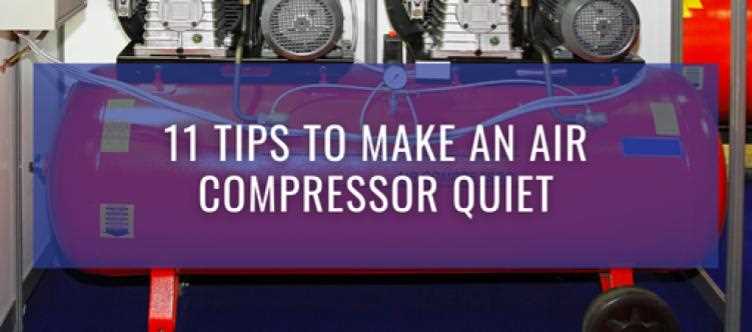
As your air compressor operates, vibrations can cause fasteners to become loose. Regularly inspect and tighten any loose screws, bolts, or nuts to minimize vibrations and reduce noise.
5. Keep Compressor Components Clean:
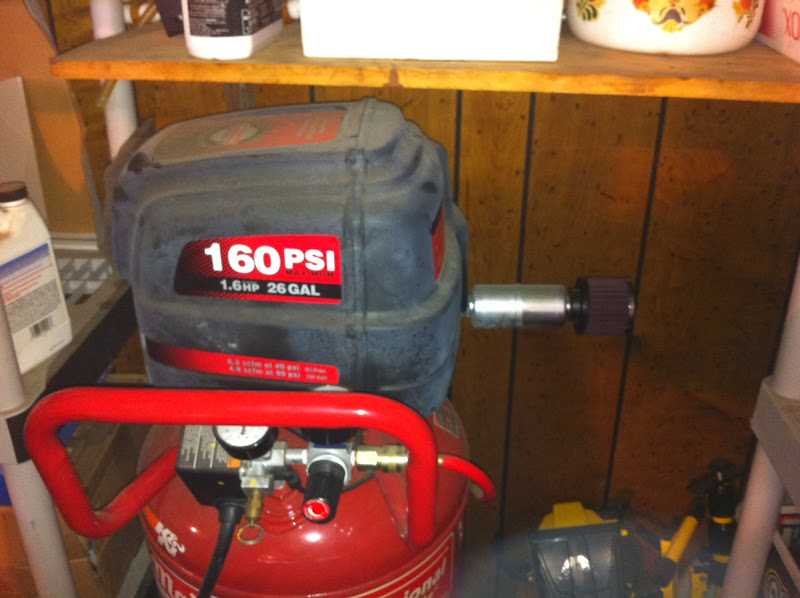
Accumulated dust, debris, and dirt can hinder the proper functioning of your air compressor and contribute to increased noise. Regularly clean all components, including the motor, cooling fins, and fan blades, to ensure proper airflow and reduce noise.
6. Check and Adjust Belt Tension:
If your air compressor has a belt-driven system, check the tension regularly. Over time, belts can stretch or wear out, resulting in increased noise. Adjust the tension according to the manufacturer’s recommendations to reduce noise levels.
7. Use Anti-Vibration Pads:
Place anti-vibration pads under your air compressor to help minimize vibrations and reduce noise transmission. These pads can absorb vibrations and prevent them from being transferred to the floor or surrounding structures.
8. Insulate Air Lines:
Insulating air lines can help reduce noise levels by preventing vibrations from being transmitted through the pipes. Use foam or rubber insulation sleeves to wrap around the air lines and minimize noise transmission.
9. Regularly Check and Replace Worn-Out Parts:
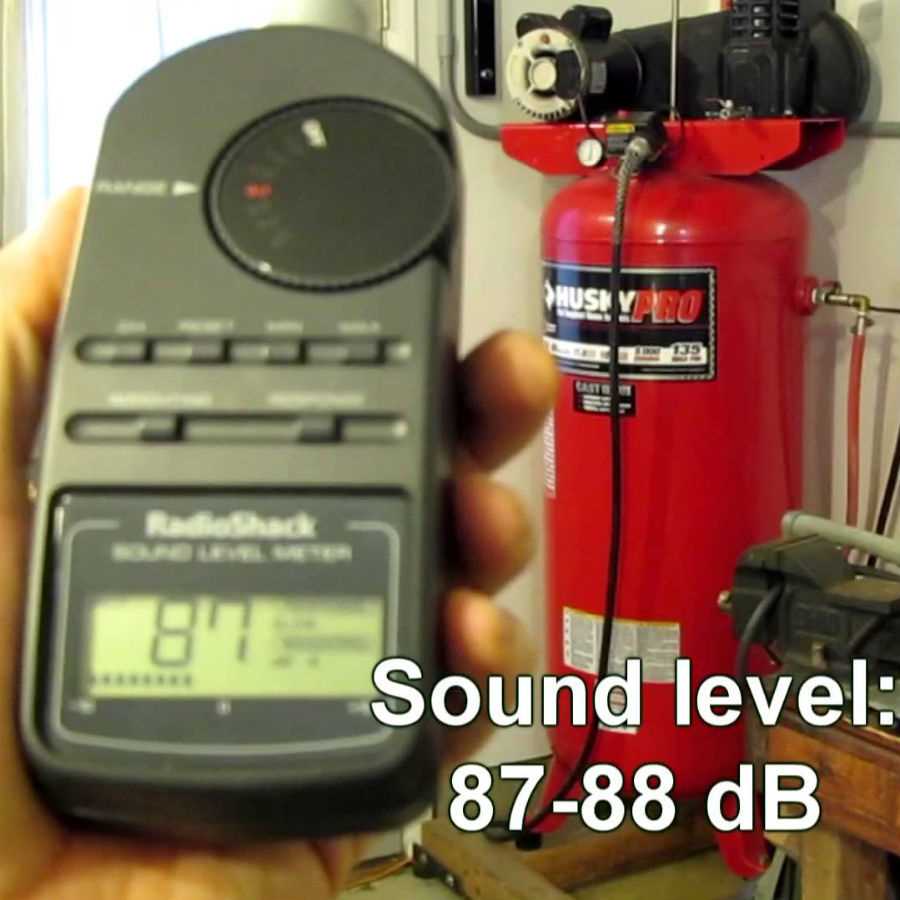
Regularly inspect all components of your air compressor and replace any worn-out or damaged parts. Worn-out parts can contribute to increased noise levels and reduce the overall efficiency of your compressor.
10. Follow Manufacturer’s Maintenance Schedule:
Lastly, follow the manufacturer’s recommended maintenance schedule for your air compressor. Regularly perform routine maintenance tasks, such as oil changes, filter replacements, and component inspections, to ensure quieter operation and prolong the lifespan of your compressor.
Relocating Your Air Compressor for Noise Reduction
If you’re looking to reduce the noise from your air compressor, one solution is to relocate it to a different area. By moving your air compressor to a more isolated or insulated location, you can significantly reduce the noise it emits.
Identify a suitable location: Look for an area in your workspace that is away from noise-sensitive areas or rooms. This could be a corner of your garage or a separate utility room.
Insulate the walls: If you have a dedicated space for your air compressor, consider insulating the walls with sound-absorbing materials. This will help absorb the noise and prevent it from leaking out to other areas.
Install acoustic barriers: Another option is to install acoustic barriers around your air compressor. These barriers are designed to absorb sound waves and reduce noise transmission. You can find pre-made barriers or build your own using materials like mass-loaded vinyl or acoustic foam.
Use vibration isolation pads: Air compressors can produce vibrations that contribute to the overall noise level. By using vibration isolation pads under your air compressor, you can minimize the vibrations and subsequently reduce noise.
Consider a remote intake: If your air compressor has a remote intake option, take advantage of it. By moving the intake to a separate room or area, you can minimize the noise generated by the intake process.
Regular maintenance: Don’t forget to perform regular maintenance on your air compressor to ensure it’s operating at its best. A well-maintained system is generally quieter and more efficient.
Communicate with others: If you share your workspace with others, let them know about your efforts to reduce noise from your air compressor. By working together, you can find a suitable solution that benefits everyone.
By relocating your air compressor to a more suitable location and taking steps to reduce noise transmission, you can create a quieter working environment for yourself and those around you.
Additional Tips and Tricks to Reduce Air Compressor Noise
1. Isolate the air compressor
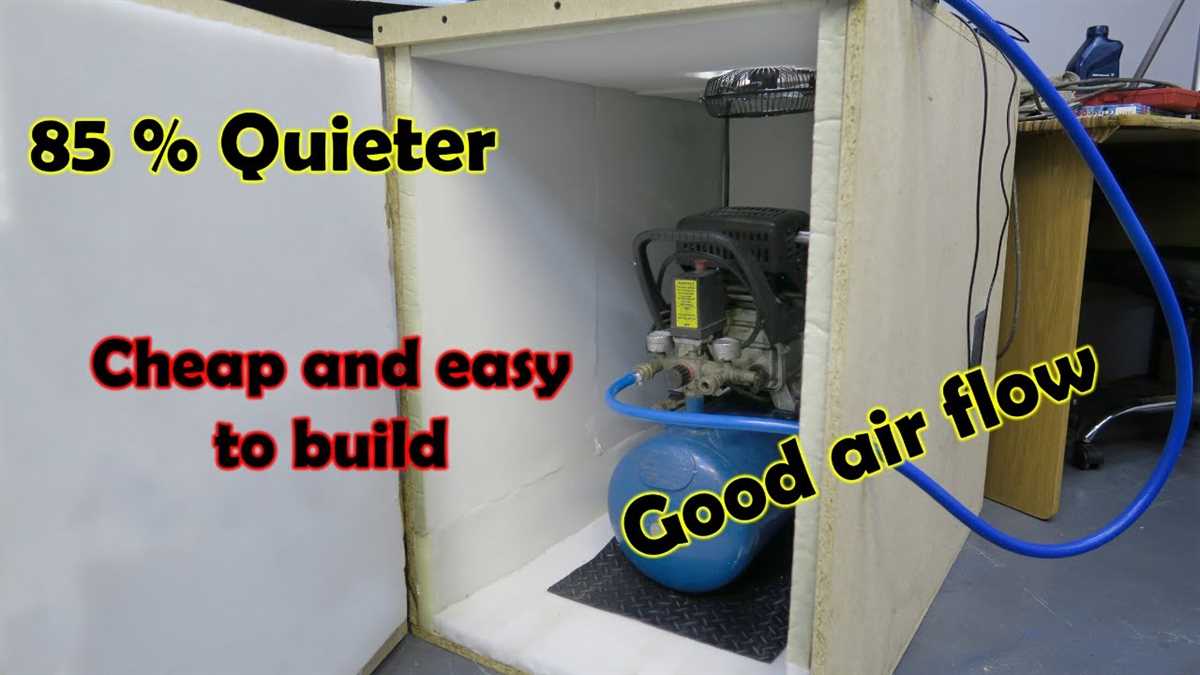
One effective way to reduce air compressor noise is to isolate it from the surroundings. Placing rubber pads or foam underneath the compressor can help absorb vibrations and minimize noise transmission to the floor or walls. Additionally, consider creating a separate enclosure or room for the compressor to further reduce noise.
2. Install a muffler
A muffler can be a great investment to reduce the noise produced by an air compressor. These devices are designed to decrease the intensity of sound waves by redirecting airflow and reducing the pressure changes. Install a high-quality muffler that is compatible with your compressor to significantly attenuate noise levels.
3. Insulate the pipes
Noise can also travel through the pipes connected to the air compressor. To minimize this noise transmission, consider insulating the pipes with sound-absorbing materials. This can include wrapping the pipes with foam or using pipe insulation sleeves to prevent noise from spreading throughout your setup.
4. Regularly maintain and clean the compressor
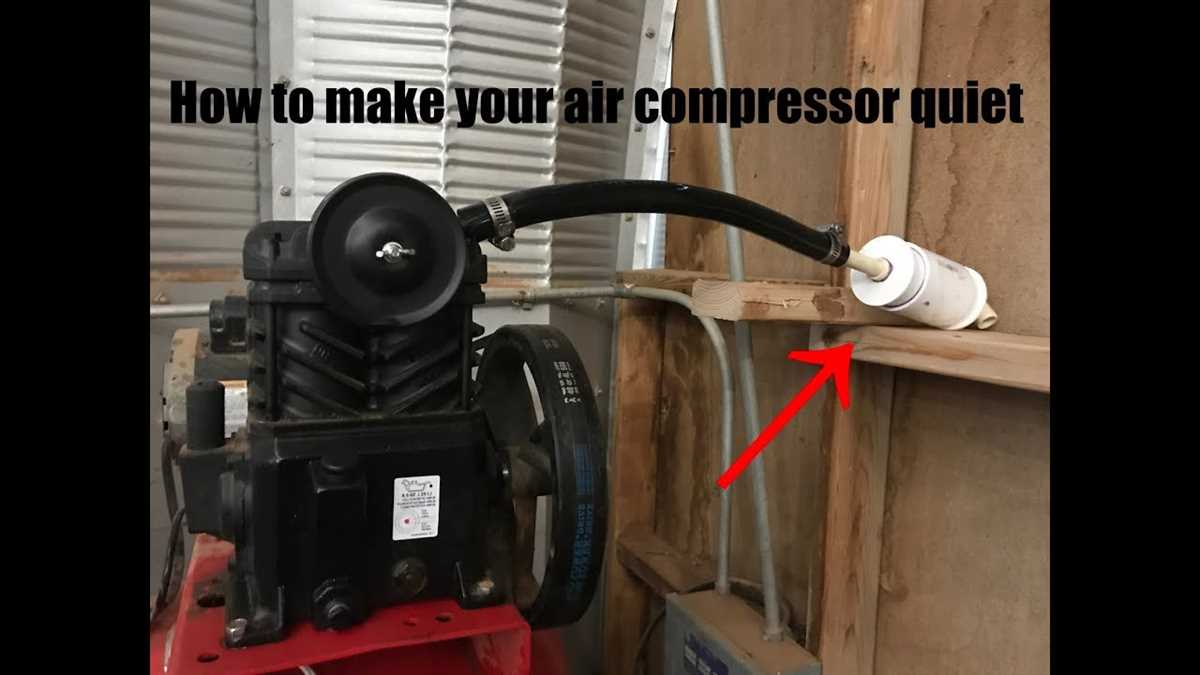
A well-maintained air compressor is likely to produce less noise. Regularly clean the compressor components, such as the air filters and intake vents, to ensure their proper functioning. Additionally, lubricate the moving parts to reduce friction and noise caused by worn-out or dry components.
5. Upgrade to a quieter compressor
If noise reduction is a significant concern, consider upgrading to a quieter air compressor model. Look for compressors that are specifically designed for low noise operation, such as those with enclosed cabinets or sound-dampening features. Investing in a quieter compressor can provide long-term noise reduction benefits.
6. Use soundproofing materials
Adding soundproofing materials to the room or area where the air compressor is located can effectively reduce noise levels. Consider using materials like acoustic foam, soundproof curtains, or panels to absorb and dampen sound waves. These materials can help create a more quiet and comfortable environment.
7. Install an acoustic barrier or enclosure
If the noise from the air compressor is still too loud, consider installing an acoustic barrier or enclosure around the compressor. This can be a custom-built structure using materials like mass-loaded vinyl, drywall, or plywood. The barrier or enclosure should create a physical barrier that can block and absorb the sound waves, reducing noise levels.
8. Ensure proper ventilation
Proper ventilation is essential for maintaining the optimal performance of an air compressor. Adequate airflow can also help reduce noise levels by preventing overheating and minimizing the need for the compressor to work harder. Ensure that the compressor is placed in a well-ventilated area and that there is enough air circulation to dissipate heat effectively.
9. Adjust the compressor settings
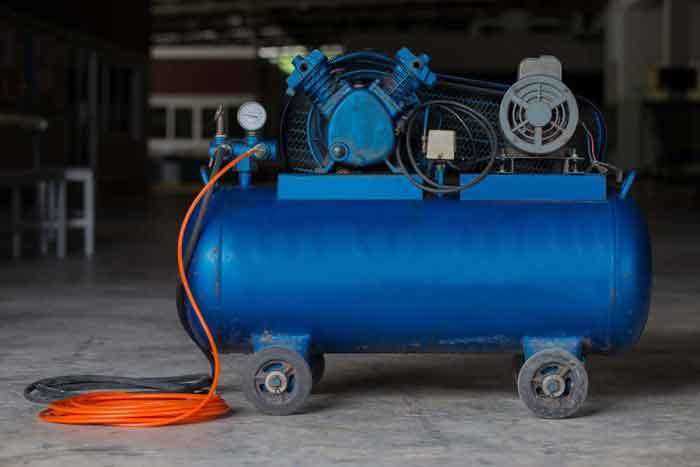
Check the air compressor settings and adjust them as needed to reduce noise. Lowering the pressure settings or adjusting the speed of the compressor can help minimize noise production. Consult the manufacturer’s instructions or seek professional advice to ensure that the adjustments are done correctly.
10. Limit usage during sensitive hours
If you are concerned about noise disturbance during specific hours, consider limiting the usage of the air compressor during sensitive times. This can include avoiding compressor operation during early morning or late evening hours when noise levels are more likely to disrupt others. Be mindful of local regulations and noise restrictions to ensure compliance.
By implementing these additional tips and tricks, you can further reduce air compressor noise and improve the overall quietness of your setup. Experiment with different methods and combinations to find the most effective solution for your specific needs.
FAQ:
What are some effective ways to reduce noise from an air compressor?
There are several effective ways to reduce noise from an air compressor. Some of them include installing vibration pads, using a noise-reducing cover, insulating the compressor room, and using an acoustic enclosure.
Can I use a soundproof box to reduce noise from my air compressor?
Yes, using a soundproof box is an effective way to reduce noise from an air compressor. It helps to enclose the compressor and reduce the noise level that escapes into the surrounding area.
Is it possible to reduce noise levels by positioning the air compressor in a different location?
Yes, the location of the air compressor can have an impact on the noise levels. Placing it in an area that is farther away from sensitive areas or using sound-blocking barriers can help reduce the noise levels.
What role do vibration pads play in reducing noise from an air compressor?
Vibration pads help to absorb and dampen the vibrations produced by the air compressor, which in turn reduces the noise level. They are placed underneath the compressor and act as a buffer between the compressor and its surroundings.
How effective is insulating the compressor room in reducing noise?
Insulating the compressor room is a highly effective way to reduce noise. By insulating the walls and ceiling, the sound waves are absorbed, preventing them from bouncing off the surfaces and creating noise. It creates a quieter environment for both the compressor and the surrounding areas.
Video:







